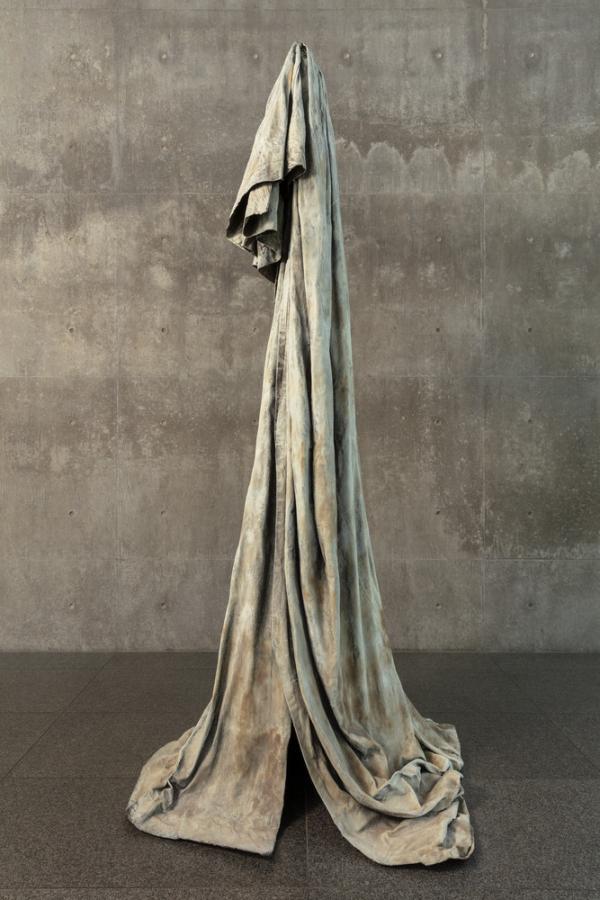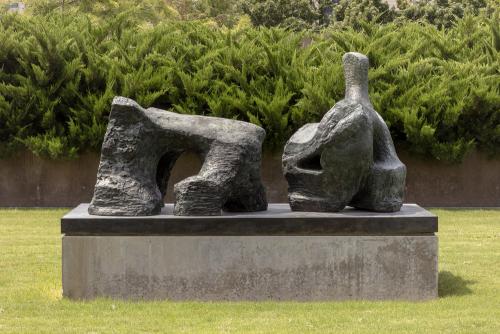Skip to main content
Drape
Artist
Joseph Havel
(Born 1954, United States)
Date1999
MediumBronze
DimensionsOverall: 119 × 56 × 56 in. (302.26 × 142.24 × 142.24 cm)
Credit LineCollection of the Modern Art Museum of Fort Worth, Museum purchase, Sid W. Richardson Foundation Endowment Fund
Object number2001.6
Status
On viewCopyright© Joseph Havel
Category
Label TextIn Joseph Havel’s Drape, 1999, what seems to be a floating, ghostlike apparition of cloth is in fact a heavy bronze sculpture. The artist often begins by hanging or draping different cloth materials throughout his studio, allowing gravity to dictate a natural configuration. From this starting point, he makes numerous drawings and photographs to document the folds. He then applies wax to the fabric to stiffen it, incorporating the drawn revisions as well as making new ones as he manipulates the wax and cloth. When the form is finally set to his satisfaction, the waxed cloth is cut into sections, each of which is then subtly manipulated again. From these intermediate stages of development, bronze casts are made of the sections, which are then reassembled and welded into a final form.
Drape represents an almost-ten-foot tower of cascading cloth, reassembled from more than seventy sections of material. The visceral quality of the folds alludes to the ability of painting to make inert material sensuous, as well as the sculptor’s challenge of bringing dynamic physical form into space. Tied off three quarters of the way up the drape, creating a crowning cascade of cloth, Drape could refer to the famous sculpture of the French novelist and playwright Honoré de Balzac by Auguste Rodin (1840–1917). When asked about this possible reference, Havel remarked, “I think about Rodin’s Balzac a lot and sometimes it creeps into the work. It definitely seems like it did here. But remember, it’s just an old drape that could have just fallen that way.”
Drape represents an almost-ten-foot tower of cascading cloth, reassembled from more than seventy sections of material. The visceral quality of the folds alludes to the ability of painting to make inert material sensuous, as well as the sculptor’s challenge of bringing dynamic physical form into space. Tied off three quarters of the way up the drape, creating a crowning cascade of cloth, Drape could refer to the famous sculpture of the French novelist and playwright Honoré de Balzac by Auguste Rodin (1840–1917). When asked about this possible reference, Havel remarked, “I think about Rodin’s Balzac a lot and sometimes it creeps into the work. It definitely seems like it did here. But remember, it’s just an old drape that could have just fallen that way.”





